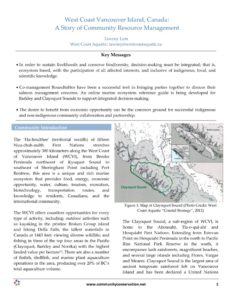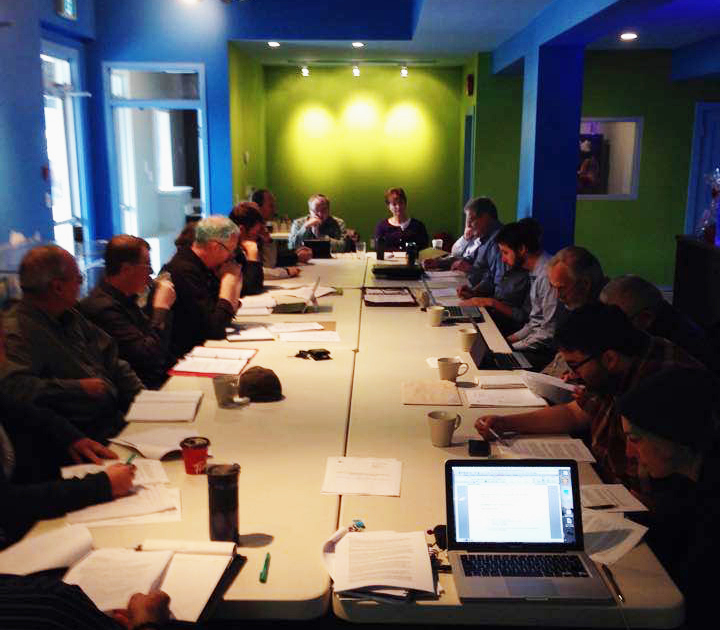
08 Aug West Coast Vancouver Island, Canada
Tawney Lem, West Coast Aquatic; tawney@westcoastaquatic.ca
Key Messages
• In order to sustain livelihoods and conserve biodiversity, decision-making must be integrated; that is, ecosystem based, with the participation of all affected interests, and inclusive of indigenous, local, and scientific knowledge.
• Co-management Roundtables have been a successful tool in bringing parties together to discuss their salmon management concerns. An online marine ecosystem reference guide is being developed for Barkley and Clayoquot Sounds to support integrated decision-making.
• The desire to benefit from economic opportunity can be the common ground for successful indigenous and non-indigenous community collaboration and partnership.
Community Introduction
West Coast Aquatic’s geographic scope reflects the ‘Ha-houlthee’ (territorial wealth) of fifteen Nuu-chah-nulth First Nations. Stretching approximately 300 kilometers along the West Coast of Vancouver Island (WCVI), from Brooks Peninsula northwest of Kyuquot Sound to southeast of Sheringham Point including Port Renfrew, this area is a unique and rich marine ecosystem that provides food, energy, economic opportunity, water, culture, tourism, recreation, biotechnology, transportation routes, and knowledge to residents, Canadians, and the international community.
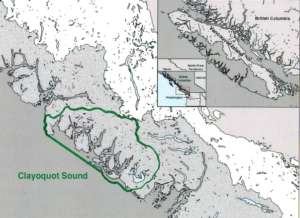
Figure 1: Map of Clayoquot Sound (Photo Credit: West Coast Aquatic “Coastal Strategy”, 2012)
The WCVI offers countless opportunities for every type of activity, including: fishing in Port Alberni (named by the World Fishing Network as the “Ultimate Fishing Town” in 2010); outdoor activities such as kayaking in the pristine Broken Group island and hiking Della Falls, the tallest waterfalls in Canada at 1443 feet; and viewing a diverse amount of wildlife. Fishing areas on the WCVI (Clayoquot, Barkley and Nootka) account for three of the top four areas in the Pacific with the highest landed value per hectare(1). There are a number of finfish, shellfish, and marine plant aquaculture operations in the area, producing over 20% of BC’s total aquaculture volume.
The Clayoquot Sound, a sub-region of WCVI, is home to the Ahousaht, Tla-o-qui-aht and Hesquiaht First Nations. Extending from Estevan Point on Hesquiaht Peninsula in the north to Pacific Rim National Park Reserve in the south, it encompasses lush rainforests, magnificent beaches, and several large islands including Flores, Vargas and Meares. Clayoquot Sound is the largest area of ancient temperate rainforest left on Vancouver Island. Marine species and wildlife thrive in this region of ancient forests, where trees can grow to over 15 feet in diameter and as old as 1,500 years. Clayoquot Sound is considered to be one of the most spectacular wilderness areas on the continent and has been declared a United Nations Biosphere Reserve.
Conservation and Livelihood Challenges
Despite the region having tremendous natural assets and opportunities, the area also faces significant challenges. In the mid-1990s, leaders from the West Coast of Vancouver Island came together to discuss key issues: declining fish stocks and increased species at risk; pollution; lack of coastal community access to adjacent resources; unresolved First Nations title, rights, and reconciliation; increased debt and declining funding; lack of governance credibility; social problems; climate change; marine hazards; invasive species; conflicting coastal uses; and food security. The leaders came to the conclusion that there was not one single cause, and not one single cure. Everything is connected. To affect change, a collective effort was required and the West Coast Vancouver Island Aquatic Management Board (now known as ‘West Coast Aquatic’) was born.
Since the mid-1990s, the area has seen some notable advancements: conflicts have decreased; collaboration has increased; rights and title have gained some definition through a treaty and ongoing court cases; risk assessments guide stewardship work; and multi-sector governance models continue to evolve. However, communities continue their efforts to: increase local benefit from resource use; build struggling fishery stocks; preserve the local culture of artisanal and sustenance fishing; and diversify the economy, amongst other issues.
Meanings & Motivations
Viewing the actions of its partners, West Coast Aquatic understands resource conservation in the region to mean sustainable use with respect (iisaak) and active stewardship. Conservation is different from preservation, a term that carries a stigma in the region as being related to those who “say no to everything”. In the past, the region has seen significant conflict between sectors. However, some long-time adversaries are now working together, and long held perspectives are changing as opportunities increase for open dialogue around critical questions. Protocols between First Nations and the aquaculture industry in Clayoquot Sound is a good example.
Community based resource users are conservation motivated by the increasing volume of resource use benefits that are leaving the communities (e.g. a large number of fishing licenses are held by a few corporations), but the environmental impacts are largely felt by those inside the communities. There is an interest in having the inclusion of local knowledge improve decision-making and increasing local benefits.
These users are also interested in giving back to/supporting the resource that is at the heart of their businesses/sport, as they don’t want to lose economic and/or recreational opportunity. Many community based resource users are also multi-generational. They want to continue what their families have done for years, and hope to pass on the practice to their children.
The motivations of First Nations include: regaining their traditional roles of stewardship and management; ensuring the environment can support the full exercise of aboriginal rights and economic aspirations; having management reflect traditional values of hishuk ish tsawalk (everything is one, taking care of the resources is taking care of ourselves and vice versa); and wanting local/traditional knowledge to improve decision making.
Local governments are motivated by the desire to change the perception of what their towns’ identities represent (not just resource economies). Several governments in the regional district are looking to reinvent their brand, and healthy ecosystems are needed to support their new image (e.g. tourism).
Community Initiative
Recognizing the size and interconnected nature of these issues, local groups created West Coast Aquatic as a forum to pool resources and work towards collective solutions. The formation of West Coast Aquatic was right around the same time that Canada passed the Oceans Act (1997), one of the first pieces of national legislation to recognize emerging challenges in oceans and coastal health and also aimed at mandating collective action.
In this context, West Coast Aquatic set out to produce an integrated strategy to improve the health and wealth of the west coast of Vancouver Island. Through interviews with over 700 organizations and individuals, the Coastal Strategy was developed. Central to the strategy is bringing together knowledge from different sources about the West Coast of Vancouver Island area to create a common understanding of what is happening, why, and what needs to be done.
Governance Related to Challenges Being Addressed
West Coast Aquatic provides several consensus-based forums for involving First Nations and other local communities in decision-making. These include a Governance Board that makes policy recommendations to government, and multi-sector roundtables for salmon management. The Governance Board includes representatives from all levels of government, Nuu-chah-nulth First Nations, and all sectors with an interest in aquatic resource management (e.g. commercial fishing, aboriginal fishing, recreational & sport fishing, aquaculture, environment, processing, labour, tourism & recreation, marine transportation and forestry) (see Figure 2). The Salmon Roundtables include representatives from the Federal Government, Nuu-chah-nulth First Nations, all salmon fishing sectors, and stewardship organizations.
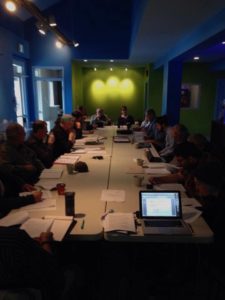
Figure 2: Collaborative, consensus-based governance (Photo Credit: Tawney Lem)
Both the Governance Board and Roundtables incorporate diverse tools and methods (including the Nuu-chah-nulth management principles of hishuk ish tsawalk and iisaak, values based discussion, and consensus) for truly representative and collaborative decision-making that produces lasting results. Through inclusive representation, the Governance Board and Roundtables empower users and groups to have more authority over managing the resources in their communities.
Monitoring and Evaluation of Outcomes
Monitoring of West Coast Aquatic’s work is done both formally and informally. The Governance Board has set four strategic priorities: collaborative governance, ecosystem approach, access to resources, and stewardship. For each priority, outcomes, outputs, activities and indicators are developed that are guided by the Coastal Strategy. At the end of each year, the Governance Board reviews areas of success and opportunities for advancement in the coming year. Some of the outcomes that are monitored include:
Governance:
• Improvement in the quality and inclusiveness of marine resource based decisions.
• Reduction in the potential for conflicts between users.
Ecosystem Approach:
• Marine Ecosystem Reference Guide recommendations are harmonized with government advisory processes.
• Marine Ecosystem Reference Guide information is accessible, up-to-date, and is factored into the development and review of applications.
• Planning is ecosystem based.
Access to Resources:
• Improved community access to seafood.
• Expanded economic diversity and activities, and increased economic stability.
Stewardship:
• Areas that are integral to marine ecosystem health and abundance are protected.
• Stewardship actions of resource users are increased.
For the Roundtables’, the Terms of Reference and goals are reviewed annually, and a post-season evaluation is conducted by all Roundtable participants to assess the success of the harvest plans. Feedback is then incorporated during joint development of the coming year’s plans.
Practical Outcomes
Since 2001, the West Coast Aquatic Governance Board has maintained the participation by all governments, First Nations and sectors. Recently, the Terms of Reference was amended so that the appointment of First Nations’ representatives was more reflective of the First Nations’ governance structures. This has increased the number of First Nations’ seats from two to eight, and this is anticipated to increase their connection to the Governance Board.
Access to resources and community benefit from resource use are two important issues for the Governance Board. WCVI fishers continue to struggle with the impacts of the Pacific Salmon Treaty, which has led to a 52% reduction in Chinook catch and 28% reduction in the regional troll fleet. This has the potential to profoundly change trolling as an economic component of coastal livelihoods and as a historic aspect of the fishing industry.
West Coast Aquatic is facilitating discussions between troll groups with the goal of bringing a consensus proposal to the Federal government on the use of the remaining Chapter 3 (Chinook) mitigation fund, and is also hosting WCVI wide discussions so community interests can be documented and included in the negotiations of a new version of the Pacific Salmon Treaty.
One action item identified in the Coastal Strategy was the need for marine spatial planning. The goal was to be able to assess the intersection between activities and values, thereby promoting the conservation of significant ecological, cultural and social values as the ‘right activities are matched to the right location’.
Over a three-year period, West Coast Aquatic embarked on an extensive process with its community partners to conduct extensive interviews that documented new knowledge, verify existing information through community experts, and carry out modeling using the Marine InVEST and Marxan models. Another year was spent gathering additional feedback through sector and public review sessions.
After thoughtful discussions about West Coast Aquatic’s role, and in order to ensure that the authority of decision makers was maintained, it has been decided that the end product of these efforts is not a “plan”, but more of a resource that will guide ecosystem based decision making that is inclusive of indigenous, local, and scientific knowledge (Figure 3). The 300 data layers and associated decision-making recommendations will be available online in an interactive platform later in 2016.
The salmon Roundtables continue and have been cited up and down the coast as a successful model and regional solution that can contribute towards the federal government’s mandate to “work with provinces, territories, Indigenous Peoples, and other stakeholders to better co-manage our three oceans.”(1) Based on the success of the salmon Roundtables, discussions continue on the potential of using the Roundtable model for the management of other species.
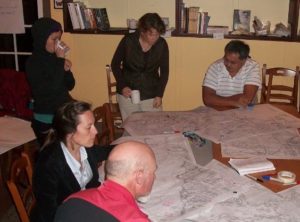
Figure 3: Community-Based Planning (Photo Credit: West Coast Aquatic staff)
West Coast Aquatic also facilitated the Pacific Rim Education and Tourism Committee through a year of research and strategy development on Education Tourism opportunities for four central west coast communities. Agreeing on the viability of the opportunity, communities are now inviting other communities and several strategic partners to join them in the implementation phase that will be led by the Clayoquot Biosphere Trust. While a new economic opportunity is progress in itself, perhaps the even greater success was having two indigenous and two non-indigenous communities form a partnership around a common interest.
Next Steps:
Within the Marine Ecosystem Reference Guide (tentative name, previously known as the Marine Spatial Plan), ecologically significant areas (ESA) were identified. Currently, 31% of the Clayoquot Sound is formally protected, however another 28% has been identified as being ecologically significant. As the next step, West Coast Aquatic will initiate a multi-sector engagement process that investigates what conservation measures (e.g. ranging from protocols through to formal marine protected areas) might be desirable and effective for the new ESAs. This initiative can also contribute towards the federal government’s mandate of “increasing the proportion of Canada’s marine and coastal areas that are protected to five percent by 2017, and ten percent by 2020”(1).
On the ground monitoring was initiated in the Clayoquot Sound based on data gaps identified in the Chinook Risk Assessment (e.g. water quality, temperature, pH, and alkalinity). The next major undertaking will be the development of a comprehensive monitoring program to ensure that goals in the Coastal Strategy are being met, and that use of the Marine Ecosystem Reference Guide is in fact leading to the desired conservation goals. A series of workshops will be held to identify what monitoring is already taking place, what indicators are most meaningful for communities, and which partners will take on the implementation of monitoring which indicators
References
1. Office of the Prime Minister. 2015. Minister of Fisheries, Oceans and the Canadian Coast Guard mandate letter.
Acknowledgements
West Coast Aquatic recognizes that our work would not be possible without the generous participation and contribution of many knowledgeable First Nations, community organizations, non-governmental organizations, government ministries and departments, academics, and community members.
Thank you to the CCRN for its financial support, which has been directed towards community engagement and capacity building. We are grateful to the Alberni Clayoquot Regional District for their grants towards the core of our organization, the West Coast Aquatic Governance Board. And, the ability to facilitate the salmon Roundtables is due to the Pacific Integrated Commercial Fisheries Initiative (PICFI) Co-management Element.
West Coast Aquatic also extends special appreciation to the Gordon and Betty Moore Foundation for its commitment to marine conservation, and for generously funding the development of the Coastal Strategy and Marine Ecosystem Reference Guide.
This research is being carried out with the aid of a Doctoral Research Award from the Canadian International Development Research Centre, a doctoral award from the Social Science and Humanities Research Council (SSHRC) of Canada, a SSHRC grant held by Dr. Derek Armitage as part of a Coastal-Marine Transformation Project, and support from the SSHRC-funded Community Conservation Research Network (CCRN).



